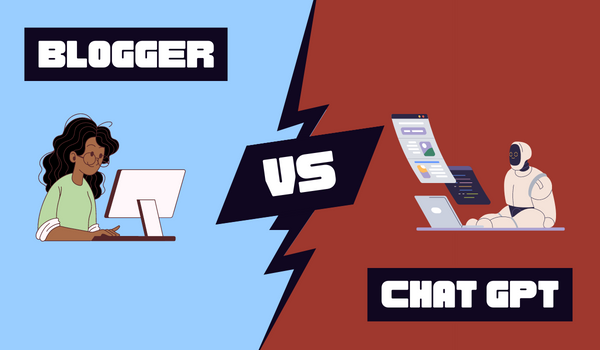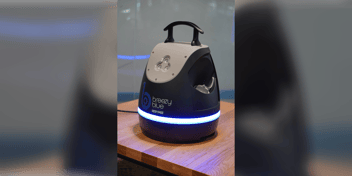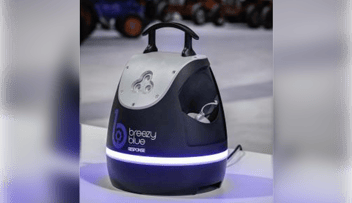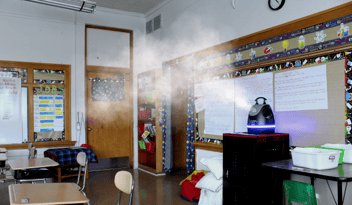
Public Opinion of Robots & AI, and Why ChatGPT Won't Take My Job
As robots and AI become increasingly integrated into various industries, the impact on the workforce has been a topic of much debate and speculation. While some experts argue that automation and AI will create new job opportunities and increase efficiency, others express concerns about job displacement, income inequality, and the dehumanization of the workplace. However, beyond these academic arguments, it is also important to understand how people themselves feel about the increasing presence of robots and AI in the workforce. In this blog, we will explore different perspectives on how individuals feel about the impact of robots and AI on the human workforce, and how we can address any concerns or challenges that arise as a result.
(Fun fact: ChatGPT, the AI chatbot, wrote that introduction for you. The next section is how I, a human being, would start this blog.)
Robots, AI, and automation are becoming a bigger part of our society - but how do people feel about it?
Personally, I like robots. Maybe this is because I wouldn’t have a job without them, or because I get to see them every day, or because I’m a part of Generation Z and grew up witnessing technology get integrated and ingrained in our society. However, I am aware that my opinion does not reflect the majority of people, and I know my experiences are unique to me. So, how do most people feel about robots?
As robots and AI begin affecting how humans work, differing opinions emerge. Many experts have surveyed and studied people’s perceptions on automation in the workforce, and while a lot of people remain unsure, it seems like the majority of people have worries about robots. Let’s take a look at seven statistics from four different studies.
(Pause! What do you think - was my introduction okay? Or is ChatGPT going to take my job?)
How People Feel About Robots and Automation in the Workforce
52% of the adult internet users in a survey agreed that, within 30 years, robots will be advanced enough to perform most activities that are currently done by humans. (Brookings Institute)
32% supported the idea of the U.S. government setting up a Federal Robotics Commission to regulate robot development and usage. Most people voted that they were unsure (39%). (Brookings Institute)
61% responded that they were uncomfortable with robots, yet in the same survey, 61% also said they were unworried about robots. (Brookings Institute)
When presented with three potential AI applications, none were supported by over 50% of survey-takers. The most supported idea was facial recognition technology for police (46%), followed by filtering of misinformation by AI (38%), and then driverless vehicles (26%). (Pew Research Center)
Human enhancement applications were opposed more than AI, with 33% supporting robot exoskeletons for manual labor, 30% supporting gene editing, and 13% supporting computer chip implants in human brains. (Pew Research Center)
In a study on losing jobs to robots, people who had never lost their jobs to automation guessed that 29% of jobs had been replaced by robots. Among the 1,959 participants, only 14% had actually lost a job to robots; this is less than half of what people assumed. (Sage Journals)
In another study, 55% of participants worried about automation affecting retail jobs, and similar amounts of people also worried about jobs in customer service, delivery, and supply chain/fulfillment. (Retail Brew)
Dissecting the Facts
The first three statistics came from the Brookings Institute survey of 2,021 adult internet users in 2018 on their general feelings towards robots. It seems that most people in this survey have high expectations for technology in the coming decades. With the advancements of the past few years, it makes sense that the majority of people believe that robots will be able to perform most human activities in 30 years. In the five years since this survey has been taken, I suspect the idea of a “Federal Robotics Commission” has become more popular. In 2018, 39% of respondents were unsure, but with deep fakes and AI technology becoming more widely used in 2023, more people are likely to support regulating robot development and usage. The most puzzling result of this survey, in my opinion, was 61% of respondents saying they are uncomfortable with robots, and another 61% saying they are unworried about them. I would expect people to be uncomfortable and worried, or comfortable and unworried, but being uncomfortable and unworried are not mutually exclusive, as proven by this study.
The next study, by the Pew Research Center (2021), focused on specific applications of AI and human enhancement technology. Most of the ten thousand survey-takers opposed these applications, especially self-driving vehicles and computer chip implants in human brains. When technology has a direct effect in people’s daily lives or their bodies, support drops. Since the last study showed that most people are uncomfortable with robots, it is no surprise that these respondents were not interested in technology interfering with their genes and transportation methods.
Something that is often brought up in conversations about robots is the possibility of tech replacing human jobs. This is a valid concern, as the Sage Journals showed, since 14% of the nearly 2000 participants had actually lost their jobs to automation. However, robotic replacements are happening less often than most people assume. The respondents estimated that 29% of people had lost their jobs to robots, which is a much higher rate than reality.
Similarly, Retail Brew found that over half of their participants worry about retail, customer service, delivery, and other jobs being replaced with automation. Throughout all these studies, it seems that the American population expects a lot from robots and AI and would be unhappy seeing it affect the workforce and their daily lives.
Blogger versus ChatGPT
Having ChatGPT write my introduction for me was a fun little exercise, but to be honest, I am not worried at all about it taking my job from me. First of all, blogging is only part of my job. Second, who else is supposed to tell it what to write? Content-wise, it definitely is quicker than me and has a lot of information to share, but it is not always accurate. It lacks personality and gives fake sources, neither of which are ideal for any blogger’s audience.
That’s just my opinion. Here’s what ChatGPT had to say about this:
“As an AI language model, my capabilities are focused on generating text-based content in response to specific prompts or questions. While I can generate high-quality content on a wide range of topics, I don't have the creativity, personal experience, or unique perspective that a human blogger would bring to their writing.
In fact, I believe that AI language models like myself can be useful tools for human bloggers, as we can help generate ideas, provide research and fact-checking support, and even generate some draft content that human writers can then edit and refine into their own unique voice and style.
So, rather than taking jobs from human bloggers, I see my role as complementing and enhancing their work.”
Overall, it seems that my competitor and I agree - ChatGPT is a tool for me to use, not a new machine that will replace me. The same goes for many robots in other industries. Automation and AI work best when paired with humans because they speed up our processes, but we can still ensure that the work is still being done correctly and following our expectations.
Robots That Assist Workers, Not Replace Them
At Build With Robots, we believe in the dignity and value of work, and in the people who do that work. It is no secret that robots and automation have replaced people and will continue to do so (shoutout to the 14% of Sage Journals’ participants), so we create technology that helps people do their jobs. Build With Robots’ goal is to reduce danger and drudgery in people’s jobs by designing automation that can do those risky tasks.
Breezy Blue and Breezy One automate disinfection and speed up the process. Custodians and others who disinfect aren’t out of a job - they have a new tool that can cut down a 5-hour job to about an hour and a half, as mentioned by a custodian at IAH Airport. First responders, such as EMTs, have to disinfect ambulances between calls. With Breezy Blue, the process of turning over ambulances for the next patient has become easier, and the risk of human error is removed. In addition, no one has to enter a contaminated room or be exposed to the disinfectant, so everyone is a little bit safer.
People who disinfect almost always have other aspects of their job. Plus, as with most machines, Breezy Blue and Breezy One require a bit of supervision - the tanks must be filled, and the batteries must be plugged in or charged. Our robots are not advanced enough to fully replace people, and that is by design. Build With Robots wants to assist workers, not replace them - despite what many people might think.
More info:




